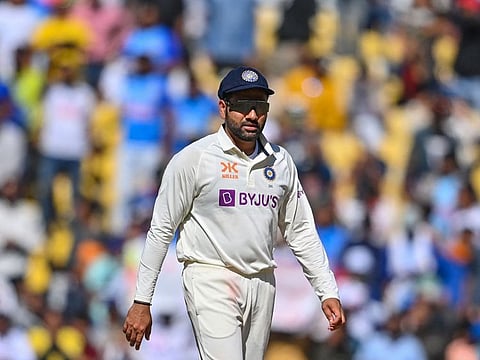Why Rohit Sharma had to walk away from Tests
He trusted his instincts — but in the end, they weren’t enough

Dubai: He trusted his eyes. Not his feet. For years, that was enough — more than enough. But in Test cricket, age has its say. And at 37, Rohit Sharma’s greatest gift became his biggest vulnerability.
The elegant right-hander, who made batting look effortless, has been one of Indian cricket’s most consistent forces for over a decade. But recent form told a different story — especially in the red-ball format.
His struggles forced him to step down from the final Test of the Border-Gavaskar Trophy in Sydney, which India lost 3-1. Rohit averaged just 6.20 across five innings. Before that, he managed only 15.16 in a 3-0 home defeat to New Zealand.
A leadership shift in the making
According to The Indian Express, selectors had already discussed moving on from Rohit as captain, with India set to begin a new World Test Championship cycle with a five-match series in England this June.
“The selectors’ thought process is clear. They want a new leader for the England tour and Rohit doesn’t fit in as captain, especially considering his red-ball form. They want to groom a young leader for the next Test cycle, and the selection committee has informed the BCCI that Rohit won’t lead the team,” a BCCI source told the paper, a day before his announcement.
But Rohit Sharma — much like the way he has batted all his life — pre-empted the delivery. Before the axe could fall, he stepped aside on his own terms.
Timing no longer on his side
Why the sudden downturn for one of the game’s most stylish batters? Rohit has always relied on his hand-eye coordination and ‘stand and deliver’ approach. He was never known for his footwork — but didn’t need to be. His ability to pick length early and play late allowed him to dominate bowlers with ease.
It helped him rack up 4,301 Test runs at an average of 40.57, with 12 centuries and 18 fifties. But as with any great batter, age brings diminishing reflexes — and that’s when technique must take over.
The Tendulkar parallel
Even the most technically perfect players struggle with time. Sachin Tendulkar, perhaps the most complete batter the game has seen, retired in 2013 at the age of 40. Towards the end, he too found runs hard to come by. The man with 100 international centuries couldn’t manage even one in his final 40 Test innings, his highest score a 94.
In Rohit’s case, the lack of foot movement — which was never a problem in his prime — began to stand out. The short ball, once dispatched from the front foot with disdain, no longer met the middle of the bat. The red ball exposed the slight delay. And in Test cricket, a split-second is enough.
Eventually, he called time on a 12-year Test career that began with a century on debut against West Indies in Kolkata. As captain since 2021, he led India in 24 Tests, winning 12 and losing nine, with a highest score of 212.
A graceful goodbye
“From his debut in 2013 to his tenure as the 35th captain of the Indian Test team, Rohit Sharma’s red-ball journey has been one of evolution, resilience, and exemplary leadership,” the Indian cricket board said in a statement.
“Rohit’s transformation from a middle-order batsman to one of the world’s most successful Test openers speaks volumes of his adaptability and hunger to succeed in the most demanding format of the sport.”
The Hitman will continue to entertain in One-Day Internationals — but he exits Test cricket with his head held high, leaving behind a legacy shaped by flair, grit, and late-career leadership.
Sign up for the Daily Briefing
Get the latest news and updates straight to your inbox



